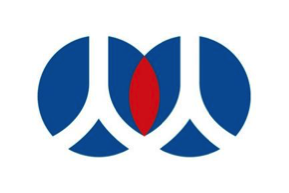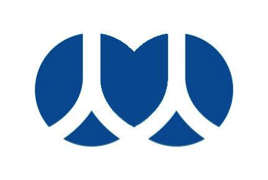Unmixing Graphic Design
During Spring Semester 2014, an ITEL Award supported my Graphic Design Studies (CCTP-659) course in the Communication, Culture, & Technology (CCT) Program. This graduate-level course employs design experiments in order to teach skills of critical and visual analysis. Although the course does not directly teach professional design methods, students are required to design submitted work, and they are encouraged to experiment with novel forms of information presentation. The course operates on the logic that researching and designing the form of an academic argument is as important as synthesizing content. Design helps demonstrate the novel ways in which students synthesize both course content and individual research.
The course positions design as one of the essential liberal arts of the 21st century mediascape. This perspective meshed nicely with the ITEL cohort track for cura personalis. The original proposal suggested a focused “digital unmixing” assignment in which students would utilize Adobe Creative Cloud to analyze pieces of graphic design. Unmixing is pedagogical method in which researchers and critics digitally interact with visual images. By isolating and removing visual elements, critics provide visual support for their interpretative arguments and analyses. Unmixing moves critical discourse from the written pages of textual description to multimedia platforms of visual and digital interaction. As a formal strategy, digital unmixing entails a particular series of steps in Adobe Creative Cloud. I planned to teach the method, and students would design interactive unmixing interfaces as a course product.
Unfortunately, technical and logistic difficulties prohibited the proposed experiment. The required Adobe software, which seemed imminent at the time of proposal, failed to materialize. The price point exceeded the scope of ITEL funding, and the promising negotiations from other sources continued throughout the semester. Adobe’s payment structure includes an affordable annual price for students and educators, but the annual requirement maps poorly onto a semester long course. Adobe Creative Suite is available in Gelardin as specialized production software. But this isolates design technologies from regular practice. Under the banner of cura personalis, I sought to integrate design thinking into students’ daily routines.
Despite these difficulties, the concept of unmixing permeated the course. Students were encouraged to utilize available software and technology (including non-digital design tools such as scissors, tape, and tracing paper) for image analysis. A key learning moment occurred early in the course when students collected and analyzed logo designs. One student submitted the RenRen logo (人人, a Chinese social networking site) and concluded: “the logo well serves the aim of a social network – by perfectly linking the two 人s at their stroke ends, and by highlighting the overlapped circles with a vivid red color.” As a class, we used digital tools to unmix the red component. We replaced the red with a matching blue of the surrounding logo. The effect was immediate and visually demonstrated the student’s analysis:


The digital change is simple, but powerful. Without the red, the blue fields rise to the foreground, the white shape of the 人人 characters diminishes, and the overlap of the two networks disappears. Digital manipulations for analytic ends are not necessarily difficult. The trick rests with opening assumptions about digital media and its acceptable uses for academic purposes. This positions digital technology as much more than a well-networked input and output device. It requires a shift in thinking whereby computers support transformative methods for exploring and critically analyzing content. Students should be encouraged to demonstrate their insight through digital manipulation and comparison, rather than simply explaining insight through textual description. By learning design technologies, students expand their ability to present rhetorical and critical arguments.
Students learned to communicate academic ideas through form and content, a blending of knowledge and skills representative of cura personalis. Students employed concepts of unmixing as a critical strategy with a modicum of formal design training; most had never experimented with design software prior to the course. Course design guidelines were simple but flexible, in order to accommodate a range of experimentation: submitted work required at least three images and page layouts required more than a single column. These limits prevent adoption of the default Word Processing format: a single central column that emphasizes the separation of image and text. From this simple design opening, students embraced image positioning, pull quotes, text inserts, page orientation, and font choice as critical and rhetorical strategies. Multiple students commented on the ways in which design practice clarified their analyses and thinking.
Future implications point in two directions. First, I hope to repeat the experiment with more formalized unmixing protocols. This second iteration would align more closely with the original proposal, once the necessary software resources are made available via the CCT studio or a campus-wide initiative. With proper software (i.e. student access to Adobe Creative Cloud or open-source alternatives), students could construct interactive unmixing stations to demonstrate proof-of-concept. Formalized unmixing can also generalize beyond my particular course. Course outcomes support earlier data on student receptivity to unmixing. Unmixing stations could support a variety of undergraduate art history and visual culture courses. Although I do not personally teach such courses, I welcome the opportunity to work in concert with faculty who do. Students could unmix and remix pieces in order to support and demonstrate their textual and visual analyses.
A second implication rests with the awareness of design as a demonstration of critical thinking: the blending of form and content. By designing their submitted work, students communicate via multiple channels. They learn to visualize arguments in the arrangement and manipulation of design elements. A graphic design component could easily integrate into an “Introduction to Academic Writing” course. Design practice makes thought processes visible in new ways, and students reflect on the way in which a chosen format (such as image positioning or pull quotes) augments their chosen message. The final reports remain textual essays and therefore do not challenge the primary aims of an academic writing course. But designed reports also lay the groundwork for more engaged scholarly production. Design embraces new literacy skills, new technologies, and visual modes of argumentation.
